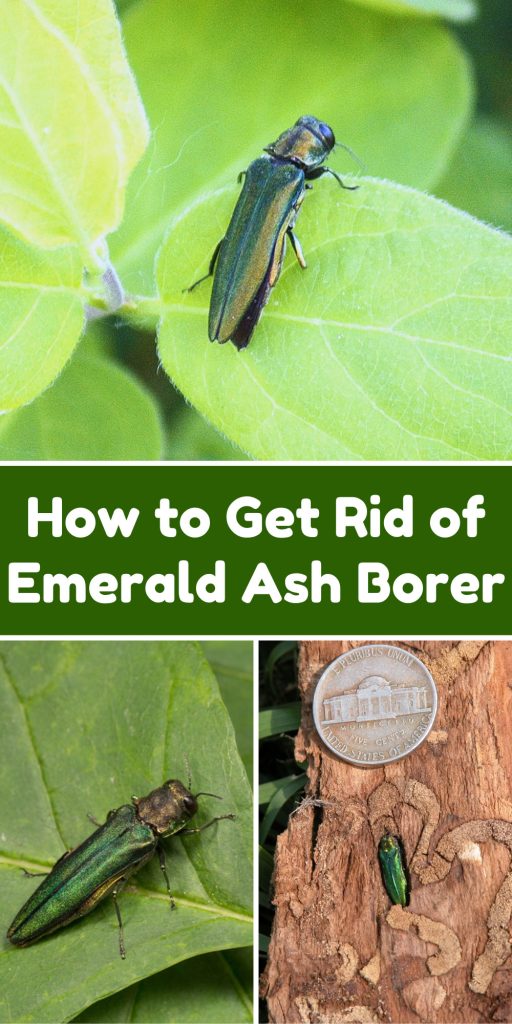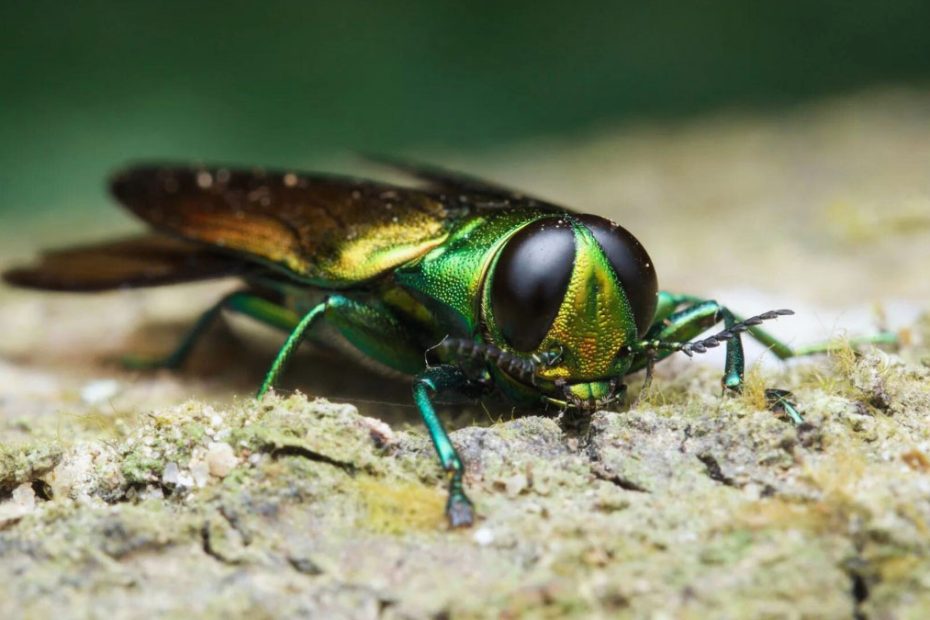Emerald ash borers (EAB) are wreaking havoc on ash trees across the country. These invasive pests, originally from Asia, bore into ash trees and disrupt their ability to transport water and nutrients, leading to tree death. If you’ve noticed D-shaped exit holes on your ash trees or thinning leaves, it’s time to take action.
Getting rid of emerald ash borers isn’t just about saving your trees; it’s also about protecting the local ecosystem. Effective management requires a combination of detection, treatment, and prevention strategies. In this guide, you’ll learn how to identify an EAB infestation and explore the best methods to eradicate these destructive pests.
Key Takeaways
- Early Detection is Crucial: Identifying signs such as D-shaped exit holes, thinning leaves, and vertical bark splits early can significantly improve management efforts for emerald ash borers (EAB).
- Understanding the EAB Life Cycle: Knowing the stages from egg to adult helps in timing your control strategies effectively, ensuring better pest management.
- Prevention Techniques: Opt for resistant tree varieties, apply systemic insecticides timely, and regularly monitor your trees to prevent EAB infestations.
- Natural and Biological Controls: Encourage natural predators like woodpeckers and use biological controls such as parasitic wasps to manage EAB populations in an eco-friendly manner.
- Chemical Treatments: Use appropriate pesticides like imidacloprid or emamectin benzoate with safe application practices to protect high-value ash trees from EAB.
- Post-Infestation Management: Assess tree damage, decide on the necessity of tree removal based on severity, and take steps to maintain tree health and ecosystem integrity after an infestation.

Recognizing Emerald Ash Borers
Identifying emerald ash borers (EAB) early can save your ash trees. Understanding their signs and life cycle ensures effective management.
Identifying Signs of Infestation
Watch for specific indicators of EAB presence:
- D-shaped Exit Holes: Look for D-shaped holes, about 1/8 inch wide, on the trunk or branches. These are where adult borers emerge.
- Thinning Leaves: Notice if the tree canopy appears thin, with fewer leaves than usual.
- Vertical Splits: Check the bark for vertical cracks or splits, often exposing larval galleries.
- Increased Woodpecker Activity: Observe if woodpeckers are more active on your ash tree, as they feed on EAB larvae.
- S-shaped Galleries: Peel back the bark to see S-shaped tunnels formed by the larvae.
Understanding the Life Cycle
Understanding the EAB life cycle helps in determining the best control strategies:
- Egg Stage: Female borers lay eggs in bark crevices during late spring to early summer.
- Larva Stage: After hatching, larvae burrow into the tree, feeding under the bark and creating S-shaped galleries.
- Pupa Stage: Larvae enter the pupal stage inside the tree, transforming into adult beetles.
- Adult Stage: Adults emerge from the tree through D-shaped holes in late spring, beginning the cycle anew.
Monitoring these stages enables timely and targeted pest control efforts.
Prevention Methods
Emerald ash borers (EAB) can devastate ash trees, impacting ecosystems and economies. Turning to prevention methods is essential in curbing their spread.
Choosing Resistant Trees
Selecting trees less susceptible to EAB can mitigate damage:
- Hybrid Varieties: Opt for hybrid ash trees that have shown increased resistance to EAB.
- Non-Ash Species: Favor planting non-ash trees, such as maples and oaks, to prevent EAB invasions.
- Diverse Plantings: Promote biodiversity to reduce the chance of widespread destruction.
Applying Preventive Treatments
Carry out preventive measures to protect ash trees:
- Systemic Insecticides: Apply products containing imidacloprid or emamectin benzoate to attack EAB larvae.
- Timing: Treat trees in spring or early summer when EAB larvae are active.
- Professional Application: Seek certified arborists for proper and safe chemical applications.
- Regular Monitoring: Continuously check trees for signs of EAB to catch infestations early.
Using these methods, you can significantly reduce the risk of emerald ash borer infestations and protect your trees and environment.
Natural Control Solutions
Natural control solutions offer ecologically friendly methods to manage emerald ash borers (EABs). These strategies can complement other control measures, providing a holistic approach to pest management.
Encouraging Natural Predators
Encouraging natural predators helps control EAB populations without chemical interventions. Key predators include:
- Woodpeckers: Birds that feed on EAB larvae, weakening populations.
- Beauveria bassiana: A naturally occurring fungus that infects and kills EAB larvae and adults. Available commercially as a biopesticide.
To attract these predators:
- Install birdhouses: Promote nesting of woodpeckers and other insectivorous birds.
- Plant flowering species: Attract beneficial insects like parasitoid wasps, which lay eggs inside EAB larvae.
Fostering a habitat for these predators boosts their effectiveness in EAB management.
Using Biological Controls
Biological controls involve releasing natural enemies of EABs to reduce their numbers. Some effective options include:
- Tetrastichus planipennisi: A parasitic wasp that lays its eggs inside EAB larvae, effectively reducing EAB populations.
- Spathius agrili: Another parasitic wasp targeting EAB larvae by injecting eggs, leading to larvae death.
To use biological controls:
- Identify infestation severity: Assess the level of EAB presence to determine the need for biological control.
- Contact local agencies: Seek advice from forestry departments for guidance on obtaining and releasing biological control agents.
- Monitor effectiveness: Regularly check treated areas to evaluate the impact of released agents on EAB populations.
Implementing these strategies requires cooperation with specialists but offers long-term benefits in managing EAB infestations sustainably.
By combining natural predators and biological controls, you enhance the resilience of your ash trees against emerald ash borers, contributing to a healthier ecosystem.
Chemical Treatment Options
Chemical treatments offer effective ways to manage emerald ash borer (EAB) infestations, particularly for high-value trees. Selecting the right pesticide and using it correctly helps protect your ash trees from these destructive pests.
Pesticide Recommendations
Choosing an appropriate pesticide ensures effective protection against EAB. Here are notable options:
1. Imidacloprid:
- Systemic insecticide
- Effective through soil drenching or trunk injection
- Best applied in early spring or fall when trees actively absorb nutrients
2. Emamectin Benzoate:
- Injection treatment
- Offers long-lasting protection, up to two years
- Suitable for ornamental trees with higher value
3. Dinotefuran:
- Fast-acting systemic insecticide
- Applied using bark spray method
- Ideal when quick intervention is needed
4. Azadirachtin:
- Derived from neem tree
- Biopesticide with systemic properties
- Applied via trunk injection, providing a more eco-friendly option
Safe Application Practices
Following safe application practices maximizes the efficacy of chemical treatments and minimizes risks:
- Read Labels Carefully:
Ensure you understand each pesticide’s instructions, dosages, and safety precautions. - Use Personal Protective Equipment (PPE):
Always wear gloves, goggles, and masks when handling and applying pesticides. - Apply at the Right Time:
Timing is crucial; apply treatments during the appropriate season to ensure optimal uptake by the tree. - Avoid Environmental Contamination:
Take care to prevent runoff into waterways or contact with non-target plants and animals. - Consult Professionals:
Engage with certified arborists or pest control specialists for accurate diagnosis and treatment application.
By selecting suitable pesticides and adhering to stringent application practices, you can effectively manage emerald ash borer threats and safeguard your ash trees.
Post-Infestation Steps
After identifying and addressing an emerald ash borer (EAB) infestation, it’s crucial to take steps to manage tree health and prevent further damage. These post-infestation actions will help safeguard your world and enhance your trees’ chances of recovery.
Assessing Tree Damage
Evaluate the extent of damage to determine the best course of action for affected trees.
Steps to Assess Tree Damage:
- Inspect Bark: Check for vertical splits and loose bark areas.
- Look for Galleries: Note S-shaped galleries under the bark.
- Check Canopy: Observe for thinning leaves and dead branches.
- Monitor for Woodpecker Activity: Increased activity indicates larval presence.
Deciding When to Remove Trees
Consider tree removal based on damage severity and long-term viability.
- Extensive Bark Splits: Indicates severe EAB damage.
- Over 50% Canopy Loss: Tree can’t recover from substantial damage.
- Major Structural Damage: Weakened limbs pose safety hazards.
- Recurring Infestations: Persistent EAB problems even though treatments.
Evaluate tree health regularly, taking prompt action to mitigate the effects of emerald ash borers and maintain the integrity of your world.
Conclusion
Successfully managing emerald ash borers requires a multi-faceted approach. By recognizing signs of infestation early and implementing preventive measures, you can protect your ash trees and the surrounding ecosystem. Combining chemical treatments, natural predators, and biological controls enhances your strategy’s effectiveness. Regular monitoring and professional guidance ensure your efforts are well-targeted and sustainable. Taking these steps not only safeguards your trees but also contributes to a healthier environment for future generations.
Frequently Asked Questions
What are the signs of an emerald ash borer (EAB) infestation?
Look for D-shaped exit holes, thinning leaves, vertical splits in the bark, increased woodpecker activity, and S-shaped galleries under the bark.
Why is it important to control emerald ash borers?
Managing EAB is crucial to preserving ash trees and protecting the ecosystem from the extensive damage these pests cause by disrupting water and nutrient transport in trees.
How can I prevent emerald ash borers from infesting my trees?
Use resistant tree species like hybrid ash varieties or non-ash species such as maples and oaks, apply systemic insecticides, and ensure timely application by professionals.
What natural control methods can help manage EAB populations?
Encourage natural predators like woodpeckers and the fungus Beauveria bassiana by installing birdhouses and planting flowering species. Biological controls can also be used, such as releasing parasitic wasps.
Which chemical treatments are effective against EAB?
Notable pesticides include Imidacloprid, Emamectin Benzoate, Dinotefuran, and Azadirachtin. Ensure safe application by reading labels, using PPE, applying treatments at the right time, and consulting professionals.
What should I do after identifying an EAB infestation?
Assess tree damage by inspecting for bark splits, noting S-shaped galleries, observing canopy health, and monitoring woodpecker activity. Consider tree removal if there’s extensive damage. Regularly evaluate tree health to mitigate effects.
